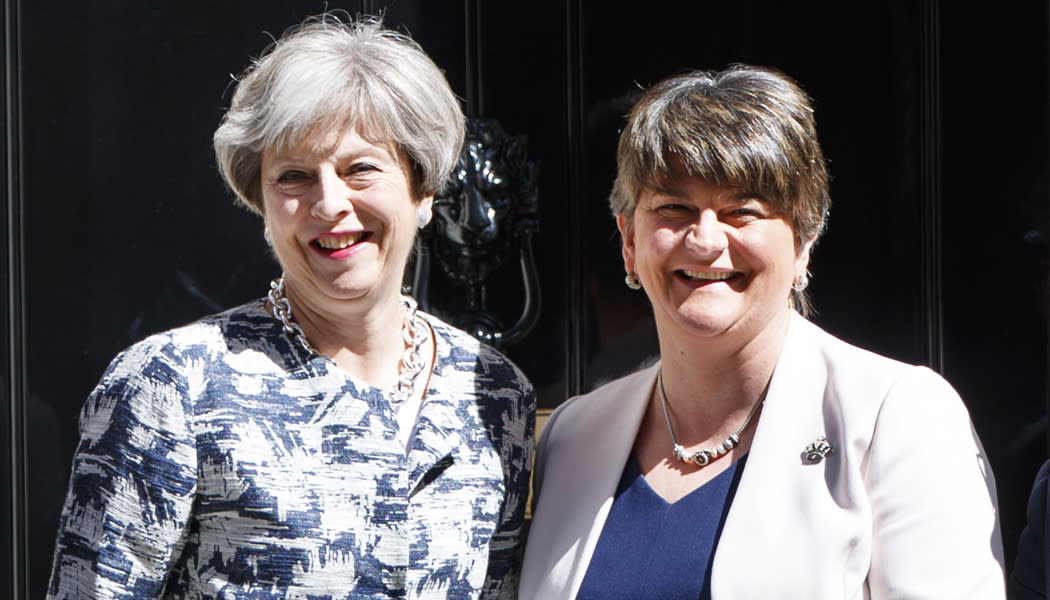Irish border row: Why did Theresa May's Brexit deal fall through?

Theresa May has failed to secure an agreement on the Irish border, stalling crucial Brexit talks in Brussels.
The Prime Minister will spend Tuesday trying to reach an agreement with the DUP, after an eleventh-hour intervention by the party’s leader, Arlene Foster, scuppered talks.
But why is the Irish border so significant to the overall Brexit deal?
What is the issue at stake?
Following Brexit, the border between Northern Ireland and the Republic of Ireland will become the UK’s only land border with a European Union member state. The EU want assurances on how that border will be managed. In fact, it is one of three key issues it has identified, along with citizens’ rights and the much-discussed (and divisive) divorce bill, that must be decided before negotiations can begin.
With economic, social, political and historical factors to consider, this negotiation is proving particularly difficult. The Republic is insistent that there is no return to a hard border for goods between the two countries, which would mean Northern Ireland accepts EU rules and regulations after Brexit. The Republic claims that a hard border to its north would also meaning drawing up a border in the Irish Sea.
What solution did the Prime Minister propose?
May sat down for lunch with Jean-Claude Juncker, President of the European Commission, on Monday to promise “continued regulatory alignment” between Northern Ireland and the Republic. The language appears to be deliberately vague in attempt to move through to the negotiation stage, and thus it’s unclear whether or not Northern Ireland would remain part of the single market and customs union after the rest of the UK leaves.
And why was it rejected?
Ahead of May’s meeting Brussels, an Irish journalist reported that that the UK would agree to “no regulatory divergence on the island of Ireland after Brexit” (language that has since been changed), incensing the DUP, which wants Northern Ireland to leave the single market entirely. The country, in fact, voted to Remain in the EU, but the DUP vehemently supports Brexit.
May was called away from her meeting Juncker after Foster put in an “urgent” call to raise her objections. Given the government is propped up by the party, and reliant on its support in parliament, May has been left between a rock and hard place. On Sunday night, even before the DUP’s intervention, Irish officials were warning that “there is still a way to go” on achieving an agreement.
The Irish prime minister Leo Varadkar was scathing. “The responsibility of any prime minister is to ensure that they can follow through on agreements that they make and we are surprised and disappointed that they haven’t been able to,” he said.
What happens next?
As mentioned, the Irish border — along with citizens’ rights and the divorce bill — is one of three issues that European Council must declare “sufficient progress” has been made before next week’s summit. At the moment, that appears to be a long way away, even as talks continue. Foster appears to hold all the cards, given her party props up the minority government, but she will be wary of allowing Jeremy Corbyn’s Labour party a way into Number 10, given his Republican sympathies.
However, the idea of “continued regulatory alignment” has opened up a can of worms. Scottish First Minister Nicola Sturgeon has said there is “no good reason” why Scotland should not get a similar Brexit deal to Northern Ireland. London mayor Sadiq Khan said: “Huge ramifications for London if Theresa May has conceded that it’s possible for part of the UK to remain within the single market & customs union after Brexit.
“Londoners overwhelmingly voted to remain in the EU and a similar deal here could protect tens of thousands of jobs.”

 Yahoo News
Yahoo News 

